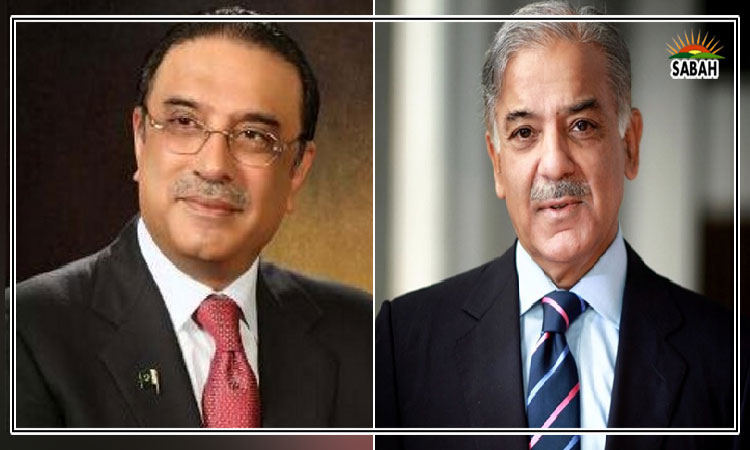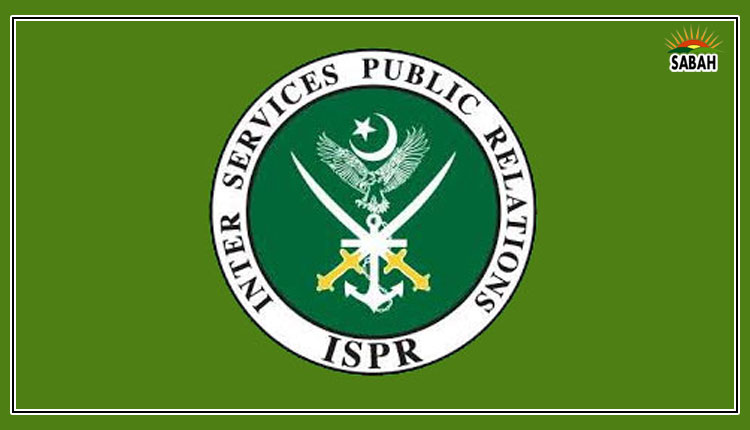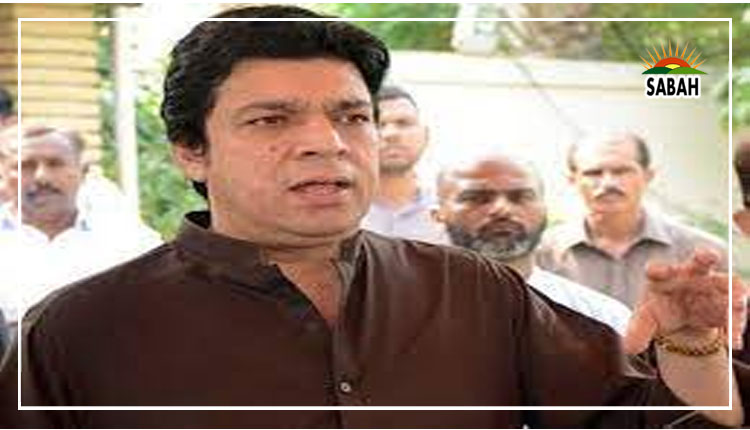Bridging the gaps in the region….Dr Khalid Jarral
The recent Iran-Saudi Arabian rapprochement has taken place against the backdrop of America’s evolving role in the Middle East and deepening strategic partnerships between China and the Gulf states.
Pakistan is centrally located between, and closely linked to, China and the Middle Eastern states. It is endowed with unique advantages to function not only as a figurative bridge between these states but also as a land link connecting their trade.
Pakistan’s geographic and historical linkages are split between a variety of countries and regions, including Afghanistan, China, India, Iran, and the Middle East. Its location and geostrategic relevance is therefore somewhat problematic for strategic planners and scholars alike.
Because Pakistan is located within the orbit of the Middle East and has strong ties with Arab states and Iran, it defines a region that is sometimes referred to as the Greater Middle East. As the Sino-Middle Eastern engagement deepens, Pakistan, China’s backdoor neighbour, will be increasingly clubbed together with these regional partners.
In the last decade or so, the US has become a leading net exporter of oil and gas, hence a competitor to OPEC countries in the global energy market. With an exponential rise of this sector in the US, the historical American interest in the security of international access to the energy sources in the Middle East has ostensibly waned.
This perception was strengthened by a palpable absence of tangible American protection, for the first time since the petrodollar agreement of 1973, when oil facilities and transport vessels were under Houthi attacks in Saudi Arabia and the UAE. It has also been suggested that it is about time for international stakeholders to proportionately share the responsibility for the security of international oil trade routes.
This implies that China, since it has replaced the US as the largest importer of oil from the Gulf countries, should contribute to the security of the energy trade routes. Meanwhile, the American threats of withdrawal of military support to Saudi Arabia and expression of opprobrium concerning their longstanding ally exacerbated the already strained relations between the two countries. Saudi Arabia vehemently rebuffed these coercive tactics of its ally and stepped out to assert its strategic and political centrality in the region and beyond.
These factors have ultimately diminished the effectiveness of the US-Saudi Arabia strategic alliance of the cold war era and set in motion a historical geopolitical and geostrategic repositioning in Riyadh.
Under the leadership of Saudi Crown Prince Mohammed bin Salman, the country has charted an independent path for its socio-economic transformation and has since departed from its exclusive reliance on the US, actively pursuing a diversification of its strategic partnerships.
With a recalibrated foreign policy and a flurry of diplomatic initiatives, the Saudi crown prince has taken centre stage in international diplomacy, proving that the ‘international pariah’ denunciation was a sheer misjudgement on the part of the American leadership. It only served to unleash the potential of Saudi diplomacy.
These policy shifts have opened the door to China’s deeper strategic engagement with Saudi Arabia. But China’s competitive relationship with the US, the ongoing tensions in the South China Sea, and its quest for safer alternatives to the Malacca Strait trade route – through CPEC and other alternatives – make it a tricky proposition.
These Saudi policies of diversification and strategic repositioning have set the stage for the enhancement of Pakistan’s defence and economic cooperation with Saudi Arabia. China’s strategic partnerships with Iran and Saudi Arabia and the Iran-Saudi rapprochement have already removed the bottlenecks of strategic economic and defence cooperation between Pakistan and Saudi Arabia.
Negotiations are currently underway between Pakistan and Saudi Arabia for an all-encompassing strategic cooperation agreement as an instrument for a comprehensive defence relationship. In this regard, another important consideration would be the position of India, which is a major consumer of Saudi oil. Defence and security cooperation is also on the agenda of the Saudi crown prince’s upcoming visits to Pakistan and the UK.
Against this background, the Special Investment Facilitation Council (SIFC) of Pakistan has emerged as a vehicle for defence diplomacy initiatives. The council capitalizes on the prestige of Pakistan’s defence institutions to pull in foreign investment from the Gulf states. In August, the council launched its investment drive with a conference to attract investment in Pakistan’s underexplored mineral wealth.
A high-level Saudi delegation participated in the conference and expressed a keen interest in harnessing Pakistan’s potential in the mineral sector through joint efforts. The delegates identified the mutual complementarity of the Saudi and Pakistani mineral development policies and called for collaboration. Coordination of cooperation in defence industrial development – an area of Saudi interest – also falls within the ambit of the SIFC.
China’s long-term economic agenda for the Middle Eastern region coincides with Vision 2030, Saudi Arabia’s national development strategy and Iran’s quest for new partners for trade and investment in the face of the American sanctions. Capitalizing on these opportunities, China has forged comprehensive strategic partnerships with Iran and Saudi Arabia as vehicles of cooperation for the pursuit of its shared strategic interests in the region. Normalization of Iran-Saudi relations thus emerged as a precondition for the success of China’s strategic partnerships in the region.
China will seek to harmonize, coordinate and synchronise its development and connectivity agenda under the BRI with Saudi Arabia’s Vision 2030 and Iran’s 20-Year Vision and the national development strategies of these two countries. Along the same lines, Pakistan has the potential to complement the common objectives of China’s partnerships with Iran and Saudi Arabia and promises a safer alternative trade route between these countries. As China’s engagement with the Middle East deepens, Pakistan’s importance as a regional player will grow.
Sino-Pakistan strategic economic cooperation, especially since 2013, has set precedents of joint management of development initiatives and political coordination. Iran and Saudi Arabia, as China’s strategic partners, can make good use of these precedents. Likewise, the international repercussions of Sino-Pakistani strategic partnership have clues for new players entering into similar agreements with China.
No wonder there are limitations of strategic partnerships with China. Such limitations have manifested in the form of adverse policy adjustments from competing powers and their allies. China’s partners will continue to weigh the advantages of such radical alignments against their limitations and find ways to manage their possible adverse impact.
The changing dynamics of the Gulf region have highlighted Pakistan’s potential to serve as China’s window to the Islamic world. However, unless evidence emerges to the contrary, China seems to have engaged with the Middle Eastern states so far without Pakistani assistance – except for occasional facilitation of meetings. In either case, Pakistan remains a source of strength for China, Saudi Arabia and Iran for further deepening of their bilateral ties and collaboration between multilateral initiatives.
Over the years, Pakistan and China have used the mechanisms of the CPEC Joint Working Group (JWG) on International Cooperation and Coordination and Foreign Ministers’ Strategic Dialogue to address regional and international politico-economic issues. The two partners have also exploited the trilateral cooperation mechanism of the Strategic Dialogue to streamline security, socio-economic and political cooperation with Afghanistan.
Along similar lines, the Sino-Iranian and Sino-Saudi strategic partnership agreements can provide for joint consultative mechanisms for internal dialogue and coordination between the parties and management of external pressure. Pakistan, as a common strategic partner of the parties, is well positioned to join such multilateral mechanisms and play an advisory role for the Middle Eastern states as well as China.
For Iran, these regional adjustments are conducive to contriving alternative solutions to its economic development agenda, gridlocked by the US sanctions. In addition to enhancing bilateral trade with Pakistan, Iran could work with Pakistan and China to explore ways to subsume the dormant Iranian projects, such as the Pakistani section of the Iran-Pakistan gas pipeline, into CPEC or other BRI framework.
Iran is currently grappling with India’s diverging interests in its strategic economic cooperation with Iran and a patchy commitment to the development of the Chabahar Port and the International North South Transport Corridor (INSTC). Whereas India seeks to exploit Iran’s connectivity advantages to bypass Pakistan for access to Central Asia, its Quad membership and its ambitious vision of technology transfer from the West drive its divergence with Iran and Russia.
Meanwhile, Iran’s strategic partnership with China and recent detente with Saudi Arabia have prepared the ground for Iran to overcome the divergence with India on the INSTC and the Chabahar Port by seeking convergence with the Gulf states, Pakistan, and China.
The views expressed in this article are personal.
The writer is a London-based independent expert on
diplomatic affairs and economic diplomacy. He can be reached at:
jarral.kr@gmail.com
Courtesy The News











